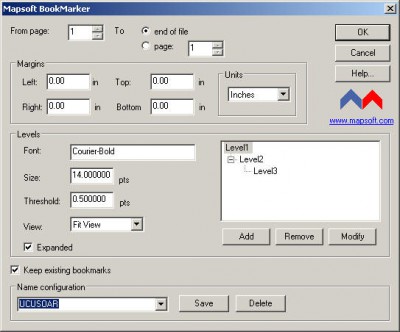bookmarker 1.0 review
Downloadbookmarker is a WWW-based application for managing bookmarks
|

|
bookmarker is a WWW-based application for managing bookmarks. I have too many bookmarks, in too many different browsers, on too many different computers. I looked around the net for bookmark management tools for Linux or Windows and didn't find anything promising. So I decided to write an application myself. So here is bookmarker.
These are the requirements for running the application
- Apache Web Server (http://www.apache.org/). I recommend downloading the source and compiling it yourself so that you can compile PHP as an Apache module. NOTE: The RPM or other binary version should work as well.
- PHP (http://www.php.net/). Again I recommend downloading the source and compiling it yourself so that you can compile PHP as an Apache module. NOTE: bookmarker should also work using PHP as a CGI executable either compiled yourself or from a binary distribution of PHP.
- MySQL (http://www.mysql.net/). You can either compile the source, or in my case I downloaded the binary RPMs from the MySQL website. Either should work.
- PostgreSQL (http://www.postgresql.org). Others have tested and have had success using bookmarker with PostgreSQL.
- ODBC/Microsoft SQL Server. Others have tested and have had success using bookmarker with MS SQL Server.
To install follow these steps:
1. Move the bookmarker directory that was created by the un-tar/un-zip to a location under your webserver's document root - so that the web server will serve the bookmarker pages.
2. Tell your webserver NOT TO SERVE pages in the bookmarker/lib directory. These pages contain the user ID and password to your database and you don't want folks seeing them. I have included an .htaccess file in this directory for use by Apache that will stop browsing of the lib directory. Make sure and test this after the installation
by trying to get to http://your-domain.com/bookmarker/lib/bklocal.inc You should NOT be able to get to this URL.
3. Update the bklocal.inc file with the name of your bookmarker database and the user ID and password used to connect to it. I use "bookmarks" as the name of my bookmarker database. Review the contents of this file and update to support the database you are using.
4. Update the bookmarker.inc file with the configuration settings for your environment.
5. If you are using PostgreSQL, update the bkprepend.inc file to comment the include of db_mysql and un-comment the include of db_pgsql. If you are using an ODBC database like MS SQL Server, update the bkprepend.inc file to comment the include of db_mysql and un-comment the include of db_odbc.
OPTIONAL:
Full customization is available with the template support in bookmarker. Update the files in the bookmarker/lib/templates directory to create the look & feel and language that you desire for your installation of bookmarker.
6. Create a database for bookmarker (e.g., "bookmarks"), then create the tables in the database used by bookmarker using the ./lib/db/create_db.[your database] definition.
In MySQL this can be done (assuming you have created a database named "bookmarks") with the following command:
mysql bookmarks
bookmarker 1.0 search tags

